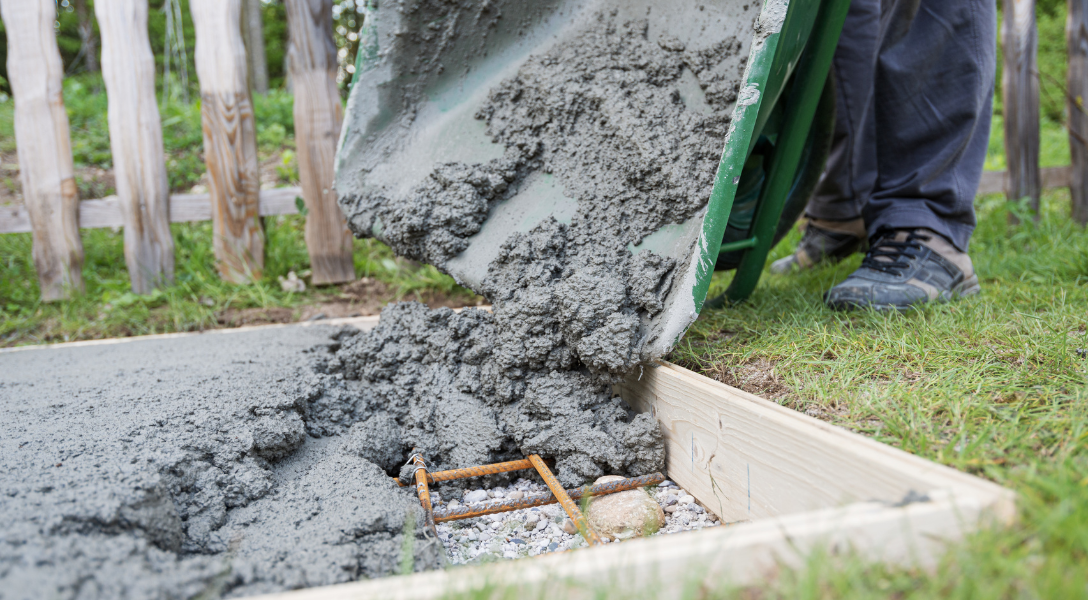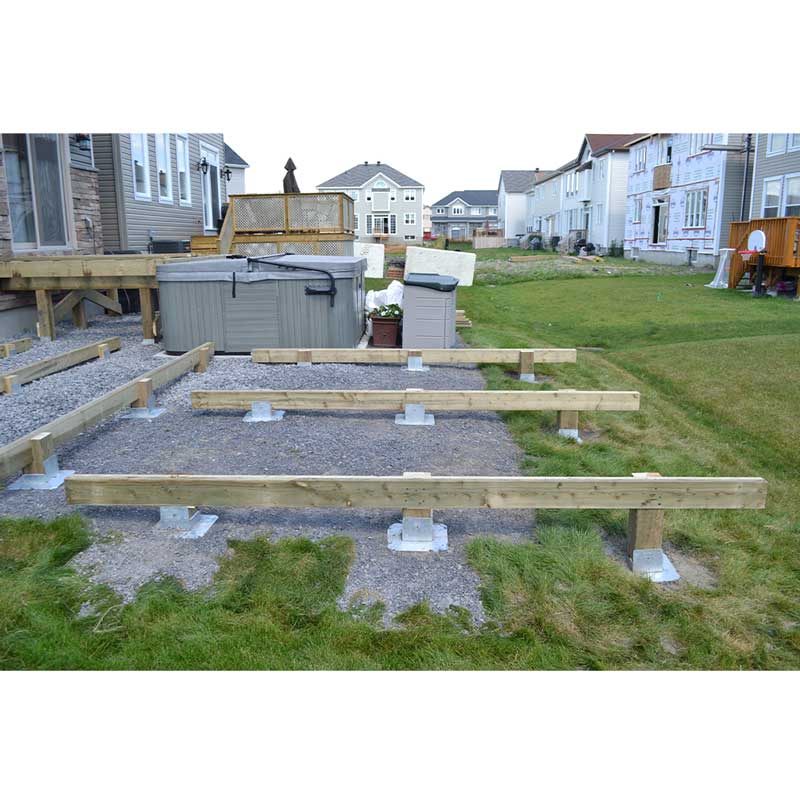Guarantee Security and Longevity With Correctly Mounted Deck Footings
Deck grounds may not be the most attractive aspect of deck construction, however they play an important function in guaranteeing stability and long life. In this conversation, we will check out the significance of proper deck grounds, elements to consider throughout installation, various types of grounds available, detailed installation overview, and maintenance pointers for guaranteeing resilient grounds.

Relevance of Proper Deck Grounds
Why are effectively installed deck grounds critical for the stability and longevity of your deck? Deck grounds are the structure on which the deck relaxes, moving the tons from the deck to the ground.
Firstly, effectively mounted deck grounds distribute the weight of the deck evenly, protecting against any type of irregular settling or sinking. This is specifically essential in locations with unpredictable soil, as it assists to mitigate the risk of the deck moving or collapsing. Additionally, well-installed grounds guarantee that the deck stays level, preventing any structural damage that can happen when a deck ends up being uneven.
Secondly, correctly installed footings offer a strong anchor for the deck, stopping extreme motion and sway. This assists to keep the structural honesty of the deck, minimizing the risk of injuries or crashes. It likewise reduces the damage on the deck, permitting it to hold up against the components and regular use for a longer amount of time.
Elements to Consider for Deck Ground Installation
When mounting deck grounds, there are numerous crucial elements to consider for proper installment. These elements can substantially affect the security and longevity of your deck. Primarily, you need to figure out the kind of dirt on which the deck will be built. Various soil types have various load-bearing capabilities, so it is important to perform a soil examination to make certain the grounds can sustain the weight of the deck and its owners. In addition, the place and layout of the deck need to be thoroughly prepared to avoid any type of challenges such as trees, utility lines, or underground pipelines. It is also important to think about the regional climate and weather, as these can affect the durability of the footings. For instance, regions with a high water table may need added procedures to stop water damages. Last but not least, the size and product of the grounds need to be chosen based upon the size and weight of the deck, along with the regional structure codes and regulations. By taking into account these aspects, you can guarantee the correct installment of deck grounds and delight in a lasting and secure deck.
Kinds of Deck Grounds to Pick From
There are a number of various kinds of deck grounds available for you to select from. Each kind has its own advantages and negative aspects, so it's important to consider your particular needs and the problems of your deck prior to making a decision.
One usual sort of deck ground is the concrete ground. This includes digging holes in the ground and pouring concrete right into them to produce a strong foundation. Concrete footings are durable and supply excellent stability, making them suitable for decks in areas with challenging soil conditions or high wind loads.
An additional choice is the helical pier footing, which includes a steel shaft with helical plates that are screwed right into the ground. These grounds are fast to set up and can be used in different dirt kinds, consisting of sandy or clay soils. They are also adjustable, enabling simple leveling of the deck.
Sonotube footings are one more popular choice. These footings are created by placing a cardboard tube in an opening and loading it with concrete. Sonotube footings are fairly easy to set up and provide appropriate stability for smaller sized decks or in areas with less requiring dirt conditions.

When choosing the kind of deck ground, it's important to consider factors such as soil conditions, deck click here now dimension and weight, neighborhood building codes, and individual choices. By selecting the appropriate ground type, you can make certain the stability and longevity of your deck.
Step-by-Step Guide for Installing Deck Footings

Figure out the area: Begin by noting the precise setting of each footing making use of stakes and string (Deck Footings). Take into account any kind of neighborhood building regulations or policies regarding obstacle ranges
Dig the holes: Utilize a blog post opening miner or an auger to dig the holes for the grounds. Usually, a depth of at the very least 36 inches is recommended for security.
Level the holes: Ensure that the bases of the openings are degree (Deck Footings). This can be accomplished by using a degree or a straight board across the top of the openings
Include gravel: Location a layer of gravel at try these out the end of each hole to enhance drainage and protect against the footing from penetrating the dirt with time.
Place the ground types: Place the ground creates right into the holes, ensuring they are focused and level. Use stakes to protect them in place.
Mix and pour concrete: Adhere to the instructions on the concrete mix bag to prepare the concrete. Pour the concrete right into the ground kinds, filling them entirely.
Smooth the surface area: Utilize a trowel to smooth the surface area of the concrete and get rid of any kind of air pockets. Permit the concrete to heal according to the maker's instructions.
Maintenance Tips for Resilient Deck Grounds
Correct upkeep is crucial for making sure the longevity and stability of deck footings. By frequently evaluating and keeping your deck grounds, you can avoid damage and possible safety and security threats. One important aspect of upkeep is to consistently look for any signs of deterioration, such as splits or movement in the footings. If you notice any type of problems, it is vital to address them quickly to avoid additional damage.
Regular cleansing is also essential for keeping deck grounds. Dirt, particles, and greenery can build up around the grounds, which can result in moisture build-up and decay. Cleaning up the footings consistently, utilizing a brush or a stress washing machine, can assist protect against these issues and prolong the lifespan of your deck.
In enhancement to cleaning, it is very important to keep the location around the footings clear of any kind of obstructions. Stay clear of piling items versus the grounds or allowing plants to grow also close to them. These blockages can trap dampness and create the footings to weaken gradually.
Last but not least, regular resealing of the footings the original source is recommended to protect them from wetness and various other ecological factors. Using a water resistant sealant can help prevent water damage and extend the lifespan of the grounds.
Verdict
Finally, correct installation of deck footings is critical for making sure security and long life of your deck. Variables such as dirt type, lots ability, and regional building ordinance need to be taken into consideration when choosing the appropriate sort of deck footings. Following a detailed overview for installation and normal upkeep will help to ensure the grounds continue to be durable and sturdy.
In this conversation, we will certainly discover the value of proper deck footings, elements to consider during installation, various types of footings offered, detailed setup guide, and upkeep ideas for making certain long-lasting grounds. Deck footings are the structure on which the deck relaxes, transferring the tons from the deck to the ground.One usual type of deck ground is the concrete ground. Place the ground kinds: Insert the footing creates into the holes, ensuring they are centered and level.In verdict, proper setup of deck grounds is critical for guaranteeing security and longevity of your deck.